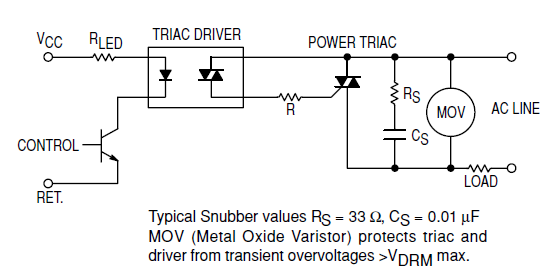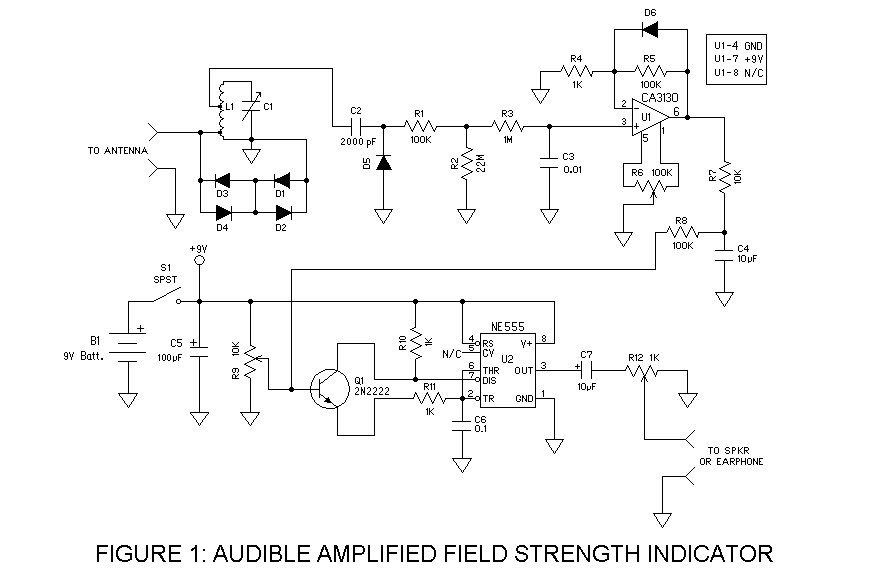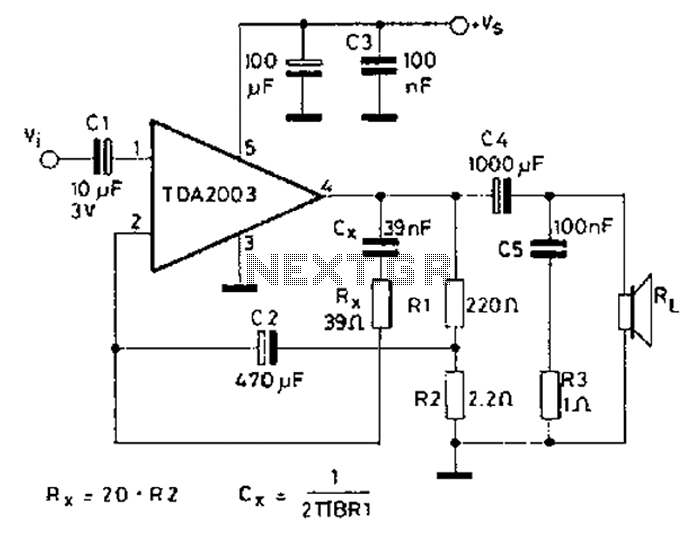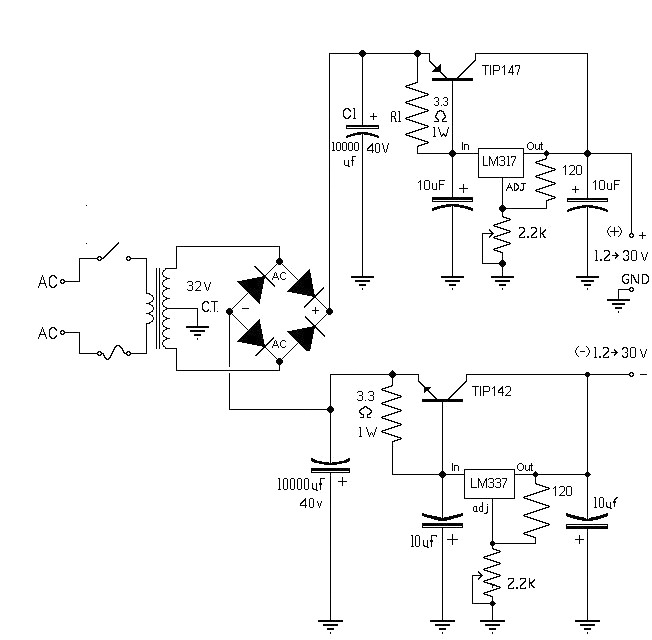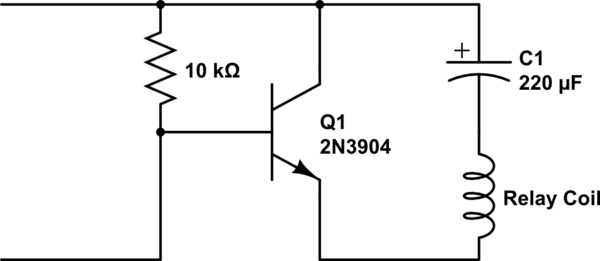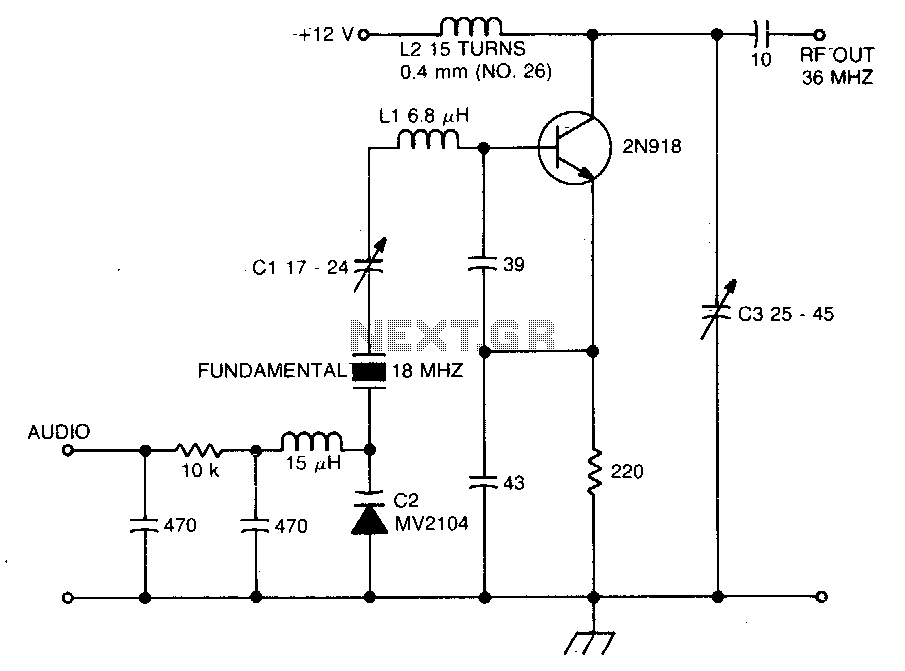
Variable capacitor and Crystal radio
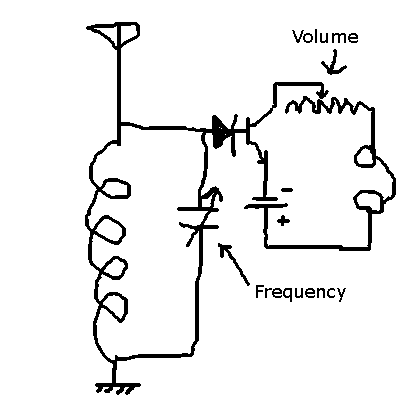
This circuit allows the selection of a station by adjusting the capacitance in an LC circuit. However, the signal remains modulated. To demodulate the signal, a second capacitor is required, but the function of this component is unclear. The available materials include aluminum foil, various wires, and three standard capacitors: 1000 µF, 47 µF, and 10 µF. There is a consideration to create an adjustable capacitor using aluminum, but the calculations for this are challenging. It has been noted that if utilizing flat plate conductors, even a square meter of aluminum would need to be positioned at a fraction of a micrometer apart, which seems impractical. Additionally, there is a significant design flaw in the circuit, as it consists of two parts only connected at one point, specifically through a diode. It is recommended to connect the emitter of the transistor to the ground point of the oscillator.
The described circuit involves an LC (inductor-capacitor) configuration that is commonly used in radio frequency applications for tuning to specific stations. The primary function of the LC circuit is to resonate at a particular frequency determined by the values of the inductor (L) and the capacitor (C). Adjusting the capacitance allows for tuning to different radio frequencies.
The necessity of a second capacitor for demodulation indicates that the circuit is likely intended for amplitude modulation (AM) or frequency modulation (FM) signals. Demodulation is the process of extracting the original information signal from the modulated carrier wave. The second capacitor could serve as a coupling capacitor or as part of a demodulation circuit, such as a simple envelope detector for AM signals.
The notion of utilizing aluminum foil as a variable capacitor suggests an interest in creating a capacitive element through the use of parallel plates. The capacitance (C) of a parallel plate capacitor is given by the formula:
C = (ε * A) / d
where ε is the permittivity of the dielectric material between the plates, A is the area of one of the plates, and d is the distance between the plates. The challenge lies in achieving the necessary precision in spacing and area to create a functional variable capacitor. The idea of having a large area of aluminum foil spaced very closely together is theoretically sound, but practically difficult due to the required tolerances.
The identified flaw in the circuit design, where two components are only connected at a single point, emphasizes the importance of establishing a complete and functional circuit path. The suggestion to connect the emitter of the transistor to the ground point of the oscillator is crucial for ensuring that the transistor operates correctly within the circuit. This connection would provide a stable reference point for the circuit and help in maintaining the proper biasing of the transistor, which is essential for its operation in amplifying the signal or switching.
In summary, this project involves the design of a tunable LC circuit for radio frequency applications, with considerations for demodulation and the innovative use of aluminum foil as a variable capacitor. The circuit must be carefully designed to ensure proper connections and functionality, particularly with the inclusion of the transistor in the design.This should let me select a station by adjusting capacitance in an LC circuit. But, the signal is still modulate it. To demodulate it, I apparently need a second capacitor there somewhere. And I have no idea how should that one part work. All I have is some aluminium foil, enough wires, and 3 normal capacitors: 1000,47, and 10 micro farads. Perhaps there is a circuit to make a normal one into adjustable I`d try to do it with aluminium, but I can`t come up with calculations. From what I see, if it`s flat plate conductor, even a whole square meter of aluminum would have to be placed at a fraction of a micrometer away from each other. That just can`t be right. 3) : yes, there is one serious error: it doesn`t make sense to have a circuit consisting of two parts that are only connected at one point.
And your circuit is just that, the single connection being the diode. I suggest connecting the emitter of your transistor to the ground point of the oscillator. 🔗 External reference
The described circuit involves an LC (inductor-capacitor) configuration that is commonly used in radio frequency applications for tuning to specific stations. The primary function of the LC circuit is to resonate at a particular frequency determined by the values of the inductor (L) and the capacitor (C). Adjusting the capacitance allows for tuning to different radio frequencies.
The necessity of a second capacitor for demodulation indicates that the circuit is likely intended for amplitude modulation (AM) or frequency modulation (FM) signals. Demodulation is the process of extracting the original information signal from the modulated carrier wave. The second capacitor could serve as a coupling capacitor or as part of a demodulation circuit, such as a simple envelope detector for AM signals.
The notion of utilizing aluminum foil as a variable capacitor suggests an interest in creating a capacitive element through the use of parallel plates. The capacitance (C) of a parallel plate capacitor is given by the formula:
C = (ε * A) / d
where ε is the permittivity of the dielectric material between the plates, A is the area of one of the plates, and d is the distance between the plates. The challenge lies in achieving the necessary precision in spacing and area to create a functional variable capacitor. The idea of having a large area of aluminum foil spaced very closely together is theoretically sound, but practically difficult due to the required tolerances.
The identified flaw in the circuit design, where two components are only connected at a single point, emphasizes the importance of establishing a complete and functional circuit path. The suggestion to connect the emitter of the transistor to the ground point of the oscillator is crucial for ensuring that the transistor operates correctly within the circuit. This connection would provide a stable reference point for the circuit and help in maintaining the proper biasing of the transistor, which is essential for its operation in amplifying the signal or switching.
In summary, this project involves the design of a tunable LC circuit for radio frequency applications, with considerations for demodulation and the innovative use of aluminum foil as a variable capacitor. The circuit must be carefully designed to ensure proper connections and functionality, particularly with the inclusion of the transistor in the design.This should let me select a station by adjusting capacitance in an LC circuit. But, the signal is still modulate it. To demodulate it, I apparently need a second capacitor there somewhere. And I have no idea how should that one part work. All I have is some aluminium foil, enough wires, and 3 normal capacitors: 1000,47, and 10 micro farads. Perhaps there is a circuit to make a normal one into adjustable I`d try to do it with aluminium, but I can`t come up with calculations. From what I see, if it`s flat plate conductor, even a whole square meter of aluminum would have to be placed at a fraction of a micrometer away from each other. That just can`t be right. 3) : yes, there is one serious error: it doesn`t make sense to have a circuit consisting of two parts that are only connected at one point.
And your circuit is just that, the single connection being the diode. I suggest connecting the emitter of your transistor to the ground point of the oscillator. 🔗 External reference
